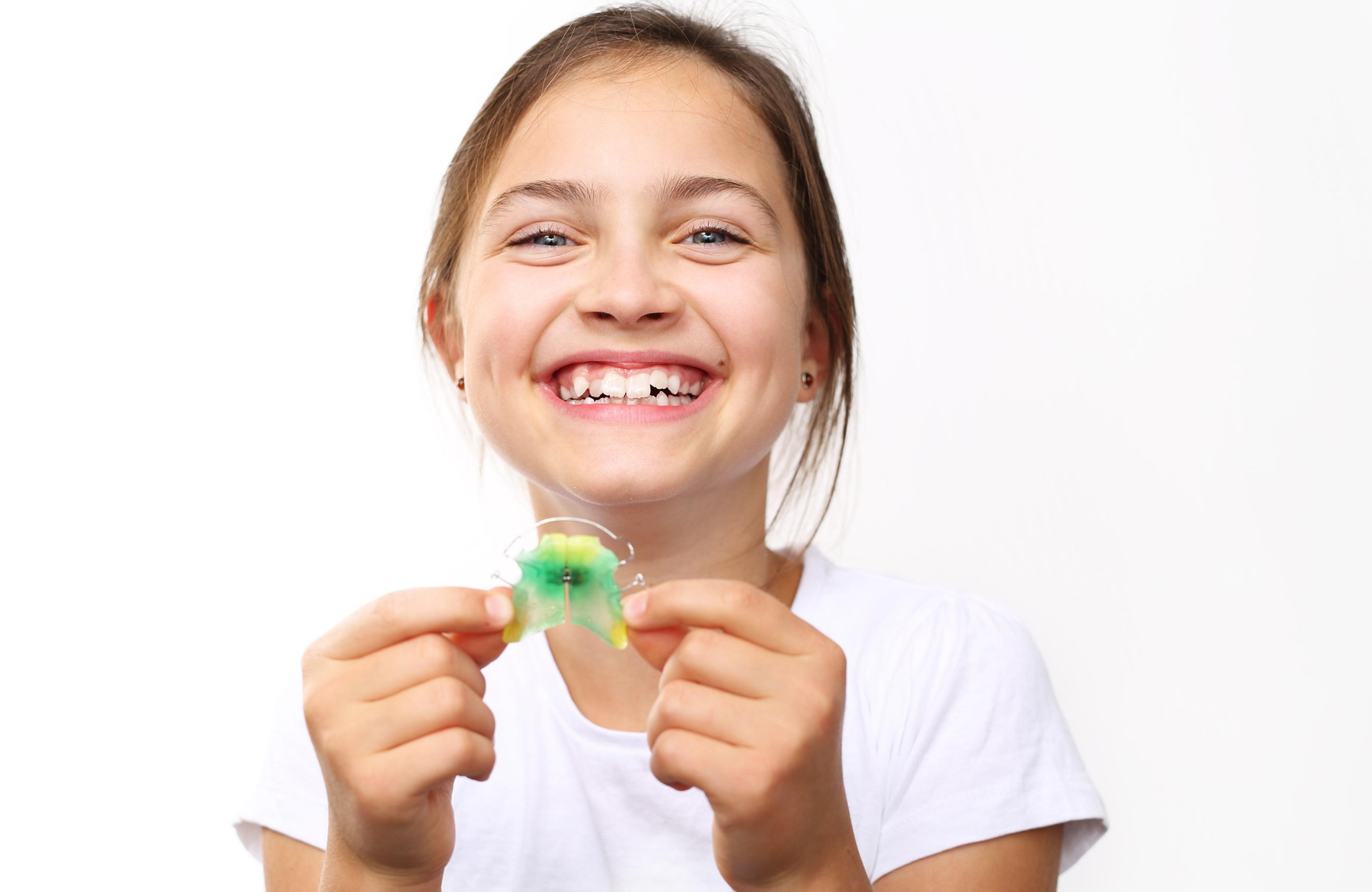Orthodontics for Children
Braces & Treatments for Children
Child Orthopaedic treatment plays a vital role in childhood development. Early evaluation is crucial to assist in correcting growth and jaw development, preventing the need for more serious orthodontic treatment in future.
According to studies of applicability of interceptive orthodontics, the most suitable time for orthodontic treatment is from the age of 6 to 12 years, allowing for modification of the oral dentition before the eruption of permanent “adult” teeth. The Australian Society of Orthodontics recommend an orthodontic consultation before the age of 7 to allow for the monitoring of correct skeletal and oral development throughout childhood.
Not only does interceptive orthodontic treatment for children encourage and correct growth developmental patterns but can ease cases of paediatric sleep apnea. By widening narrow, restricted airways through the expansion of the dentition which will improve a child’s ability to sleep and breathe correctly, leaving them well rested and with increased concentration. Problem behaviours such as thumb sucking, and dummy/pacifier reliance can also be corrected through the use of a fixed appliance.
For orthodontic care for children in Sydney, trust the experienced team at Lifestyle Orthodontics. From braces and Invisalign to plates and more, our orthodontists will thoroughly examine and devise a tailored treatment plan to safeguard your child’s oral development. To book an appointment, get in touch with us on (02) 8412 0085 or click the button below to book online today.
5 signs that your child may need Orthodontic treatment:
1. THEIR TEETH ARE CROOKED
This is probably the easiest sign to spot. If some of their teeth are coming through on a particular angle, rotated or overlapping, this might indicate they will need some sort of intervention.
2. THEY HAVE AN OVERBITE, UNDERBITE, OPEN BITE, CROSSED BITE
These problems usually result from a malocclusion (teeth misalignment) or jaw discrepancies. They can arise from genetic factors, bad habits (such as thumb sucking) or trauma. It is a good idea to ensure your kid’s bite is correctly aligned so they don’t develop pain or any additional issues as they grow up.





3. THEY HAVE A SPEECH IMPEDIMENT
A lisp or difficulty speaking can sometimes be caused by a misaligned jaw or crooked teeth. The orthodontist will assess whether it is an issue that can be corrected with orthodontic treatment or if it will require speech therapy.
4. THEY SNORE OR HAVE SLEEP APNEA
As a general rule, kids should not snore whilst asleep. This is often a sign that they need some type of intervention. Professor Ali is widely qualified on the treatment for sleep apnea and has published several articles on this subject. He will be able to assess, sometimes in conjunction with the ENT (Ear, Nose and Throat) specialist and Sleep Physician, the best treatment approach so your kids can have a better quality breathing and sleep.
5. THEY HAVE LOST TEETH PREMATURELY
If your kid lost one or more teeth at a young age, mostly if it is the result of a trauma or poor hygiene, then they may require orthodontic intervention early. Otherwise, the teeth shift as the child grows to fill the gaps of the prematurely lost teeth causing misalignment.
JAW DISCREPANCIES MAY BE ASSOCIATED WITH:
- Sleeping / Snoring problems
- Aesthetic issues
- Jaw functioning and chewing issues
These can only be treated with Orthopaedic plates when the child is growing (treatment should start not later than 13 years old). Otherwise, they can be only treated with jaw surgery once they are adults or have ceased growth.
Braces & Invisalign for Kids
Following jaw correction, a child may also need braces. Braces cannot correct jaw problems; they can only make the teeth straight.
For suitable cases, your child may be able to use Invisalign clear aligners that can make teeth straight and correct the jaw problems at the same time. This treatment takes less time and clear aligners are more aesthetic and hygienic as well. They don’t cause irritation either like regular or clear braces for children because they won’t break and won’t hurt.
Orthodontic Treatment Options for Children
Plates
In orthodontics, a plate is a device which fits around the upper teeth, the lower teeth or sometimes both. The plates use wires and springs to gently push the teeth into position, or to retain them in place as the adult teeth erupt into the child’s mouth.
There are also more sophisticated types of plates known as “functional appliances”. These plates change the direction teeth and jaws develop.
Treatment with plates can only be performed in kids during their growth period, therefore it is important to ensure we do not miss the window of opportunity to correct some discrepancies, which later, a lot of times would require surgery to be addressed.





